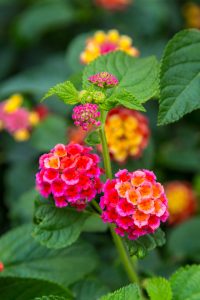 With the winter over and nothing but sunshine (and some monsoons) in front of us, every HOA will see an increase of work being done by the landscapers in the community.
With the winter over and nothing but sunshine (and some monsoons) in front of us, every HOA will see an increase of work being done by the landscapers in the community.
For instance, in Red Mountain Ranch Owners Association (RMROA), those organizations are DLC Resources Inc., in common areas, and Klean-Rite Landscaping, in the Villages.
All such contractors are into their pruning schedule. The following schedule is recommended by the Arizona Landscapers Contractors Association (ALCA) for shrub pruning and is the schedule our landscapers use as their guide:
January and February—grasses, oleanders, sages and tecomas are trimmed.
March through May—frost-sensitive plant material, such as lantana, bougainvillea cassia, dalea, acacia redolens, calliandra brittlebush, is trimmed.
June—oleander are trimmed after blooming.
September through November—yucca and hesperaloe flower stalks and Mexican birds are trimmed.
December—grasses and oleanders are trimmed.
This above list is used as a guide. You may see some types of plant material on the list twice. Below are other items to help you prepare for the upcoming season(s):
Monsoon Storms
July and August find us squarely in monsoon season. While we welcome the summer rains, the vigorous storms present some challenges for plant material. As your landscape management provider, we are prepared to deal with the effects of monsoon events.
Prior to the monsoon season, DLC Resources Inc. utilizes a proactive tree management program. Although strong storms and microbursts can damage any tree, we continually seek to minimize tree damage by identifying trees most likely to be severely affected by high winds. These trees are pruned to remove overly thick foliage and dead or structurally unsound branches to minimize the chance the tree will be damaged or cause damage during a storm.
When monsoon storms arrive, the emphasis shifts to cleanup and repair. Typically, the summer storms occur late in the day, after crews have left the property for the day. For immediate emergency aid, we have personnel on call 24 hours a day. These workers are equipped to deal with the most pressing effects of the storm, such as trees blocking streets or sidewalks.
Full-scale cleanup generally begins the following morning. Normal maintenance activities may need to be suspended or reduced in scope while the crew cleans up debris and performs repairs. If necessary, extra personnel will be provided to expedite the storm cleanup.
In spite of the damage these summer storms can cause, there is a silver lining to the monsoon clouds—moisture. The monsoon presents us all with a great opportunity to save water. We assess the amount of water each storm brings and suspend or adjust irrigation schedules appropriately. Not only is rainwater free, it also is superior to irrigation water due to its lower alkalinity. In addition to providing moisture, the rainwater helps leach accumulated salts away from the roots of shrubs, trees and turf.
Assess Your Own Yard
You can benefit from similar pre-monsoon practices in your yard. Assess your trees and have dead branches removed. If the foliage in your tree is exceedingly thick and heavy, have the tree pruned. You may want to hire a certified arborist to do the assessment for you.
Following a storm, check the status of your irrigation controller. Power outages can reset irrigation clocks and schedules, and it may not be appropriate for the weather. If your property receives a substantial amount of rain, turn off your irrigation system. Be aware of your plant material and soil moisture in order to determine when the water needs to be turned on again. Overall, you may not need to water as much as you did in the drier months of May and June.
Even if it does not rain, be aware of high humidity. Observe the condition of your plants, and check the moisture of your soil. The best way to check soil moisture is to stick a screwdriver in the ground. If you are able to insert the screwdriver easily to approximately six inches, there is enough moisture in the soil. If you have difficulty, you may need to apply more water.
Just some tips to assist you with your landscaping. Happy gardening.
Information provided by Red Mountain Ranch Owners Association, with the assistance of DLC Resources Inc.

